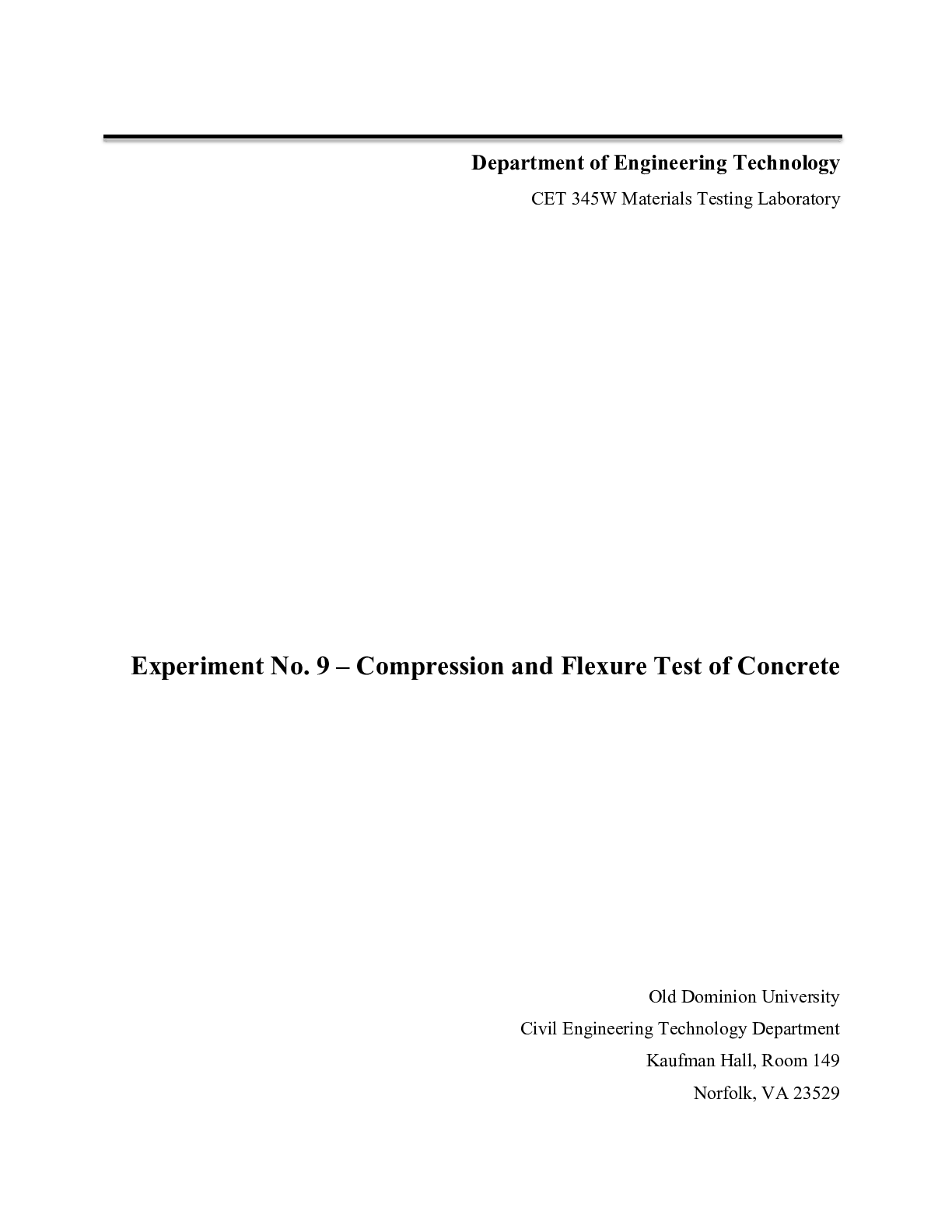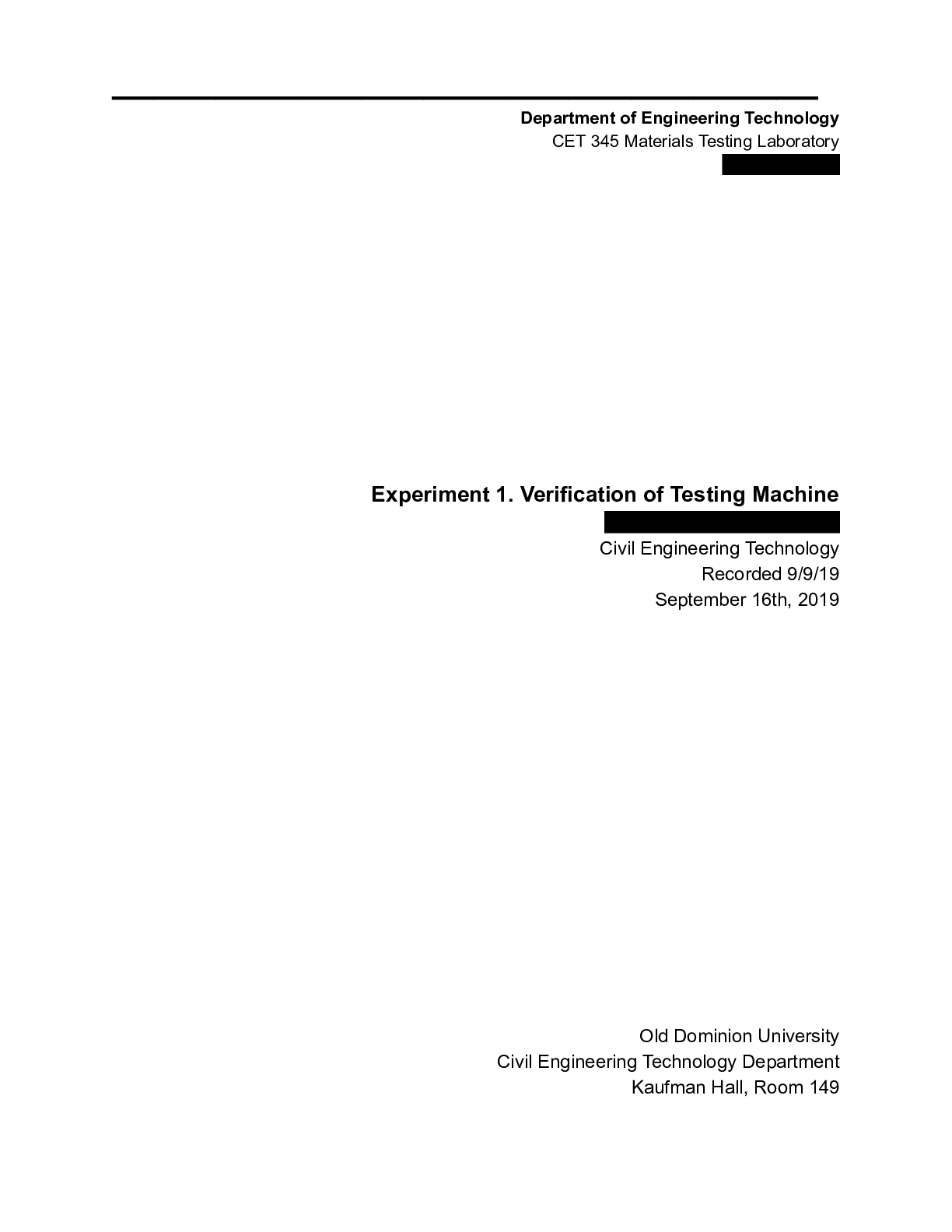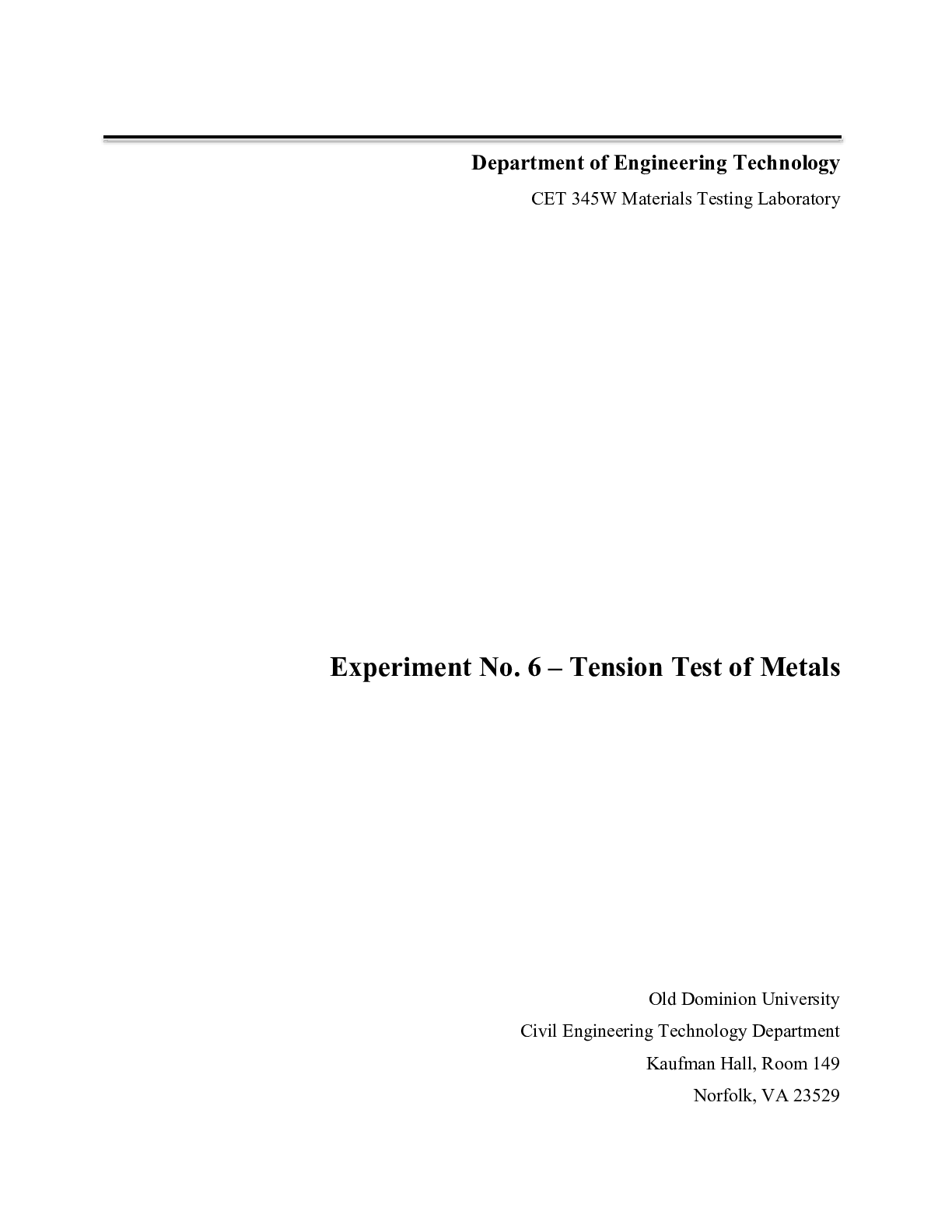Physics > Lab Report > PHY 2048L Experiment #7: Static Equilibrium of a Rigid Body full Lab Report (All)
PHY 2048L Experiment #7: Static Equilibrium of a Rigid Body full Lab Report
Document Content and Description Below
Purpose: To verify the conditions for the static equilibrium of a rigid body. Theory: This experiment deals with the concept of torque, which is the tendency of a force to cause or change the rota... tional motion of a body. When a force acts at a certain point (P) it has a position vector (r) with respect to the origin (O) and the vector quantity of this is the torque of the force (F) with respect to the origin. This torque can be obtained using the equation τ=rFsinθ where θ is the angle between r and F. If the force causes counterclockwise rotation about O, then the torque produced by this force is positive and if the force produces clockwise torque, then this torque is negative. This experiment also deals with mechanical equilibrium. A rigid body is in mechanical equilibrium when the sum of the forces acting on the body is and the net torque about any rotating axis is zero. When an object is at rest and these conditions are met it is in static equilibrium. Experimental Method and Apparatus: This experiment uses a force table with pulleys, weight hangers, a set of slotted weights, strings, a protractor, two rulers (15cm and 30cm), onion skin papers and a bubble level. Method: 1. Place a sheet of onion paper on the force table so that the hole in the paper matches the center of the plate on the force table. 2. Using a pencil, punch a hole in the onion paper over the two central holes in the plate on the force table and place pegs into each of the two holes. 3. Attach strings to each of the pegs and pass the strings over the two pulleys, which are about 120° apart on the force table. 4. Add weights to the weight hangers attached to each string. For measurement one, m1= 0.150 kg and m2=0.150 kg. For measurement two, m1=0.150kg and m2=0.300kg. 5. When the system is in equilibrium, one partner holds the system in place as the second draws lines just below each of the strings to mark each force. Then make a mark on the onion paper where the central rod of the force table makes contact with the plate on top of the force table. 6. Extend the force lines of F1 and F2 and measure θ between them. Calculate the magnitude and direction of the resultant force (F= F1 + F2). 7. Draw the moment arms L1 and L2 of forces about point O. Then determine the torques of F1 , F2 , and N about point O. 8. Draw the moment arms L2 and LN of forces about point P1. Then determine the torques of F1 , F2 , and N about point P1. 9. Repeat steps 4-7 to complete measurement two. Results Comparison and Error Analysis: For measurement one, the magnitudes of F1 and F2 were 1.47N. The normal force had magnitude 1.75N with direction 238°. About the origin, L1 and L2 were the same lengths (0.034m). τ1 was counterclockwise with magnitude 0.0499 N*m. τ2 was clockwise with magnitude -0.0499 N*m. There was zero percent error when comparing these two torques. About the point P1, L2 was 0.081m long and LN was 0.070m long. τ2 was clockwise with magnitude -0.119 N*m. τN was counterclockwise with magnitude 0.122 N*m. There was 2.45% error when comparing these two torques. It is likely that this error came from random error when marking the lines for force one and force two on the onion paper. [Show More]
Last updated: 1 year ago
Preview 1 out of 3 pages

Reviews( 0 )
Document information
Connected school, study & course
About the document
Uploaded On
Aug 09, 2021
Number of pages
3
Written in
Additional information
This document has been written for:
Uploaded
Aug 09, 2021
Downloads
0
Views
202

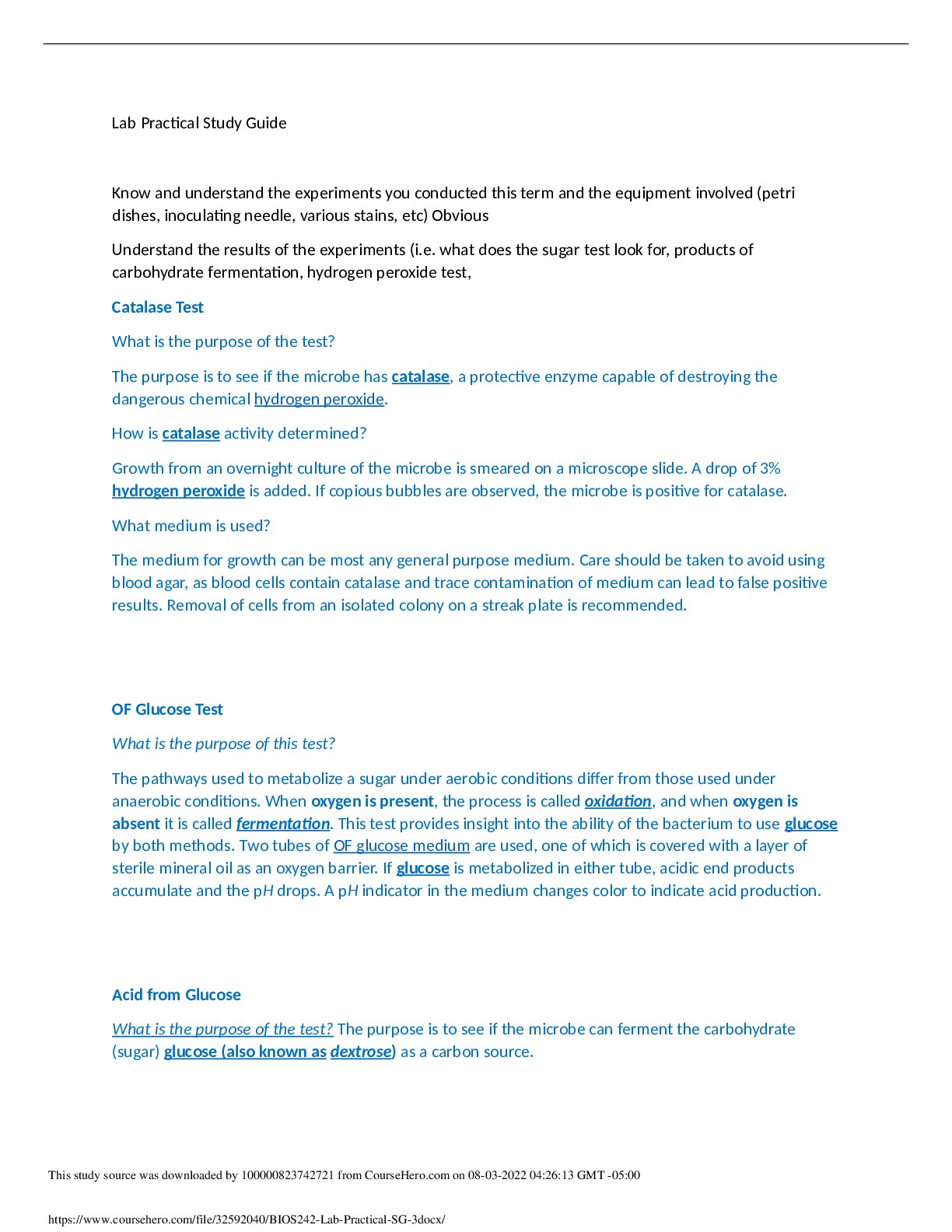
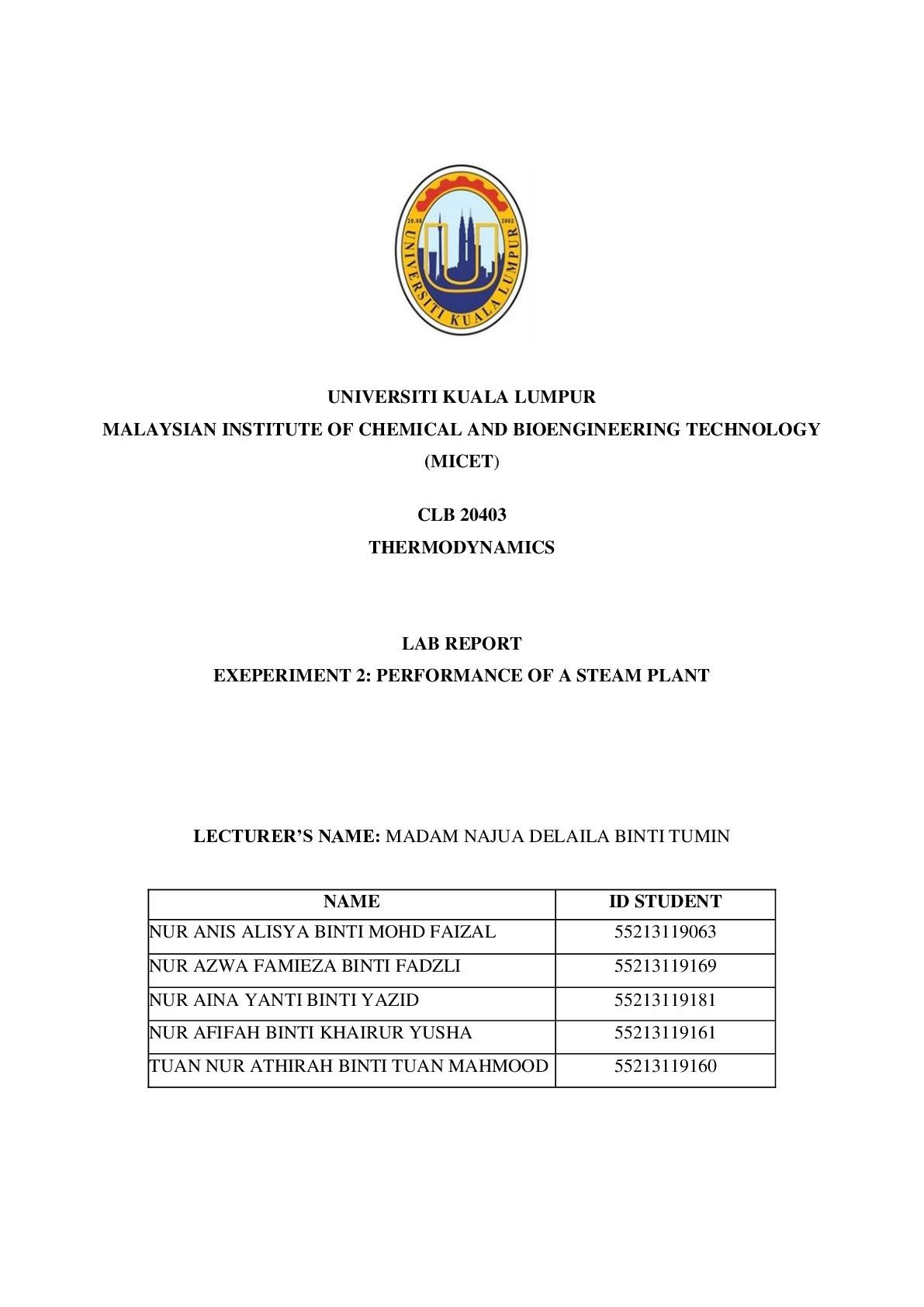




.png)










.png)




